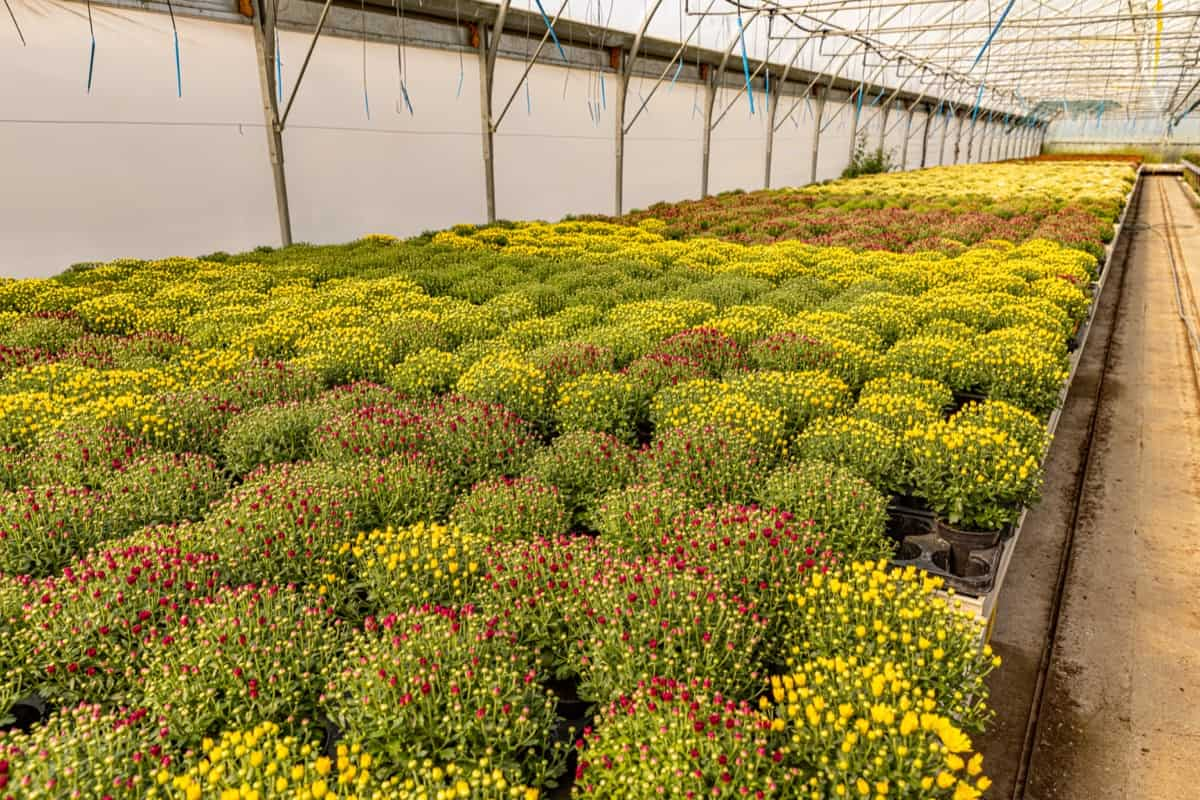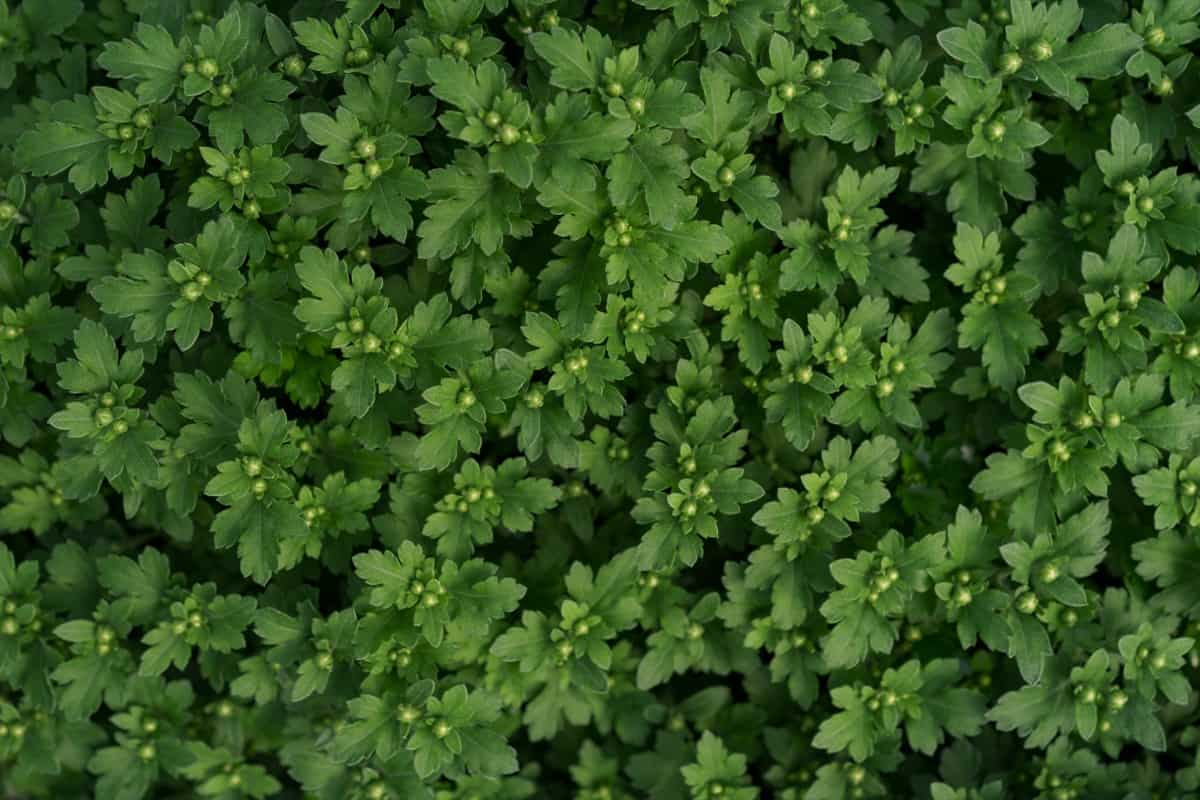Welcome to our blog post on Common Chrysanthemum Plant Pests! Chrysanthemums, with their vibrant blooms and diverse varieties, are beloved additions to gardens, but like any plant, they can fall victim to a range of common pests that can hinder their beauty and health. This blog post aims to discuss 10 of the most common Chrysanthemum pests, including their symptoms, treatments, prevention, and management. So, buckle up to explore these Chrysanthemum plants’ ten most common pests.

Important Points to Identify & Manage Common Chrysanthemum Plant Damaging Pests for Beginners
- Identifying the Pest: The first step is identifying the pest infesting your Chrysanthemum plant so that you can approach it with the most effective control method.
- Regular Monitoring: Monitor your Chrysanthemum plants regularly for signs of pest infestation. This will help you to identify an infestation early when it is easier to control.
- Sanitation: Remove the fallen plant debris and burn them.
- Natural Control: Several natural control methods can help to manage pests. These include plant extracts, essential oils, predators, and organic insecticides.
- Chemical Control: If natural controls are ineffective, use insecticides as a last resort, and follow the label instructions and dosage carefully.
Aphid Pest in Chrysanthemum Plant
- Damage Symptoms by Macrosiphoniella Sanborni, Myzus Persicae: Aphids extract the sap from plant tissues, causing stunted growth or distorted plant parts and transmitting viral diseases. Infested leaves exhibit wilting, curling, and chlorosis. Aphids excrete sugary honeydew as a byproduct of their feeding, promoting the growth of black sooty mold.
- Survival and Spread: Aphids prefer warm and dry environments of 20-25°C for their growth, reproduction, and development. High humidity facilitates their feeding and reproduction. They prefer actively growing, particularly succulent plant tissues.
- Treatment, maintenance, and Control Measures: Spray cypermethrin, deltamethrin, malathion, diazinon, carbaryl, methomyl, dimethoate, methyl demeton, indoxacarb, monocrotophos, phosphomidon, imidacloprid, clothianidin, and acetamiprid.
Thrips Pest in Chrysanthemum Plant
- Damage Symptoms by Microcephalothrips Abdominalis: Thrips feed on the upper surface of chrysanthemum leaves and cause a stippled or speckled appearance called silvering or bronzing. The affected leaves may become twisted or exhibit a puckered appearance. It can also cause distortion and curling symptoms.
- Survival and Spread: Thrips prefer warm and humid environments of 20-30°C and >60% humidity for survival and reproduction. Dense foliage and lack of airflow provide hiding places and shelter for thrips, allowing them to multiply and move between plants easily.
- Treatment, Maintenance, and Control Measures: Spray bifenthrin, cypermethrin, deltamethrin, malathion, dimethoate, spinosad, fipronil, monocrotophos, imidacloprid, acetamiprid, indoxacarb, thiamethoxam, chlorpyrifos, and malathion.
Bud Borer Pest in Chrysanthemum Plant
- Damage Symptoms by Helicoverpa Armigera: Bud borers primarily target the developing flower buds; they bore into the buds and feed on the developing tissues. These caterpillars can cause extensive damage by tunneling through the buds. They excrete black or brown droppings known as frass. The affected buds show signs of wilting, discoloration, and distortion.
- Survival and Spread: Borers prefer warm and damp climates of 20-30°C for faster reproduction and increased pest activity. They prefer plants in the flowering stage with developing buds. Weeds and crop residues can serve as alternative hosts.
- Treatment, Maintenance, and Control Measures: Spray bifenthrin, cypermethrin, deltamethrin, carbaryl, methyl parathion, endosulfan, chlorpyrifos, malathion, spinosad, imidacloprid, acetamiprid, and clothianidin.
Leaf Miner Pest in Chrysanthemum Plant
- Damage Symptoms by Phythomgza Syngenesiae: Leaf miners are minute larvae that tunnel between leaves’ upper and lower surfaces, creating distinct trails or mines. These mines appear as winding, irregular, or serpentine patterns on the leaf surface. The affected leaves show signs of discoloration, deformation, and premature leaf drop.
- Survival and Spread: Leaf Miners prefer moderate temperatures of 15-27°C and high humidity. They prefer plants with leafy vegetation. Drought, nutrient deficiencies, or other plant stressors provide an ideal environment for leaf miners to feed and reproduce.
- Treatment, Maintenance, and Control Measures: Spray bifenthrin, cypermethrin, malathion, spinosad, dichlorvos, abamectin, triazophos, monocrotophos, imidacloprid, acetamiprid, indoxacarb, and thiamethoxam.
Red Spider Mite Pest in Chrysanthemum Plant
- Damage Symptoms by Tetranychus Urticae: Red spider mites feed on the chlorophyll-rich cells of the leaves. Chlorosis is one of the earliest signs of red spider mite infestation. The webbing gives the affected plants a dusty or dirty appearance. The affected leaves show signs of curling, distortion, and premature leaf drop.
- Survival and Spread: Red Spider Mites prefer warm and dry conditions of 21-32°C for their survival and reproduction. A dense canopy, excessive nitrogen fertilization, and poor air circulation provide a conducive environment for the mites.
- Treatment, Maintenance, and Control Measures: Spray abamectin, fenbutatin oxide, bifenthrin, dicofol, vertimac, pentac, dimethoate, profenophos, spiromesifen, hexythiazox, etoxazole, propargite, and tebufenpyrad.
In case you missed it: 10 Common Chrysanthemum Plant Damaging Diseases: Symptoms, Treatment, Prevention, and Management

Leaf Folder Pest in Chrysanthemum Plant
- Damage Symptoms by Hedylepta Indicata: The most notable symptom of leaf folder infestation is the folding or rolling of leaves. These larvae create longitudinal folds or rolls in the leaves by tying them together with silk threads. The affected plants may show signs of discoloration, defoliation, reduced flowering, and stunted growth.
- Survival and Spread: Leaf folders prefer warm and humid climates of 25-30°C and >80% humidity for their survival and reproduction. High plant density and poor airflow provide a favorable microclimate for the pests.
- Treatment, Maintenance, and Control Measures: Spray cypermethrin, deltamethrin, decamethrin, imidacloprid, acetamiprid, spinosad, methyl parathion, quinalphos, diflubenzuron, and tebufenozide.
Hairy Caterpillar Pest in Chrysanthemum Plant
- Damage Symptoms by Spilosoma Obliqua: Hairy caterpillars feed voraciously and cause severe defoliation. They consume the green tissue between the veins, causing the leaves to become translucent and giving them a lacy or skeleton-like appearance. They excrete black or dark brown pellets called frass. Silk webbing is a common sign of infestation.
- Survival and Spread: Hairy caterpillars prefer warm and humid environments of 25-30°C and 60-80% humidity. Overcrowded plants, monoculture, and leafy vegetation can create a favorable microclimate promoting population growth.
- Treatment, Maintenance, and Control Measures: Spray cypermethrin, deltamethrin, decamethrin, imidacloprid, acetamiprid, and chlorpyrifos.
Termites Pest in Chrysanthemum Plant
- Damage Symptoms by Microtermes Obesi: Termites feed on the inner layers of the stem and hollow out the stems. The affected plants exhibit droopy, wilting, and yellowing symptoms. Termites excrete frass, a combination of termite droppings and wood particles.
- Survival and Spread: Termites prefer warm and humid environments of 25-30°C for their growth and survival. Waterlogged soils or areas with poor drainage create ideal conditions for termites. Sandy or loamy soils provide favorable conditions for termite tunneling and nesting.
- Treatment, Maintenance, and Control Measures: Spray chlorpyrifos, endosulfan, imidacloprid, fipronil, hexaflumuron, diflubenzuron, and noviflumuron.
Lesion Nematode Pest in Chrysanthemum Plant
- Damage Symptoms by Pratylenchus Chrysanthus: Lesion nematodes cause characteristic lesions on the roots of chrysanthemum plants. These lesions are small, dark spots or patches on the roots. The affected plants show signs of chlorosis, wilting, and reduced flowering.
- Survival and Spread: Lesion nematodes prefer warm and moist soils of 20-30°C for their development and reproduction. Adequate soil moisture levels facilitate the movement of nematodes through the soil profile.
- Treatment, Maintenance, and Control Measures: Apply fenamiphos, oxamyl, ethoprophos, carbofuran, and neem cake.
Bud and Leaf Nematode Pest in Chrysanthemum Plant
- Damage Symptoms by Aphelenchoides Ritzemabosi: The nematodes show signs of brown discoloration, stunted growth, bud deformation, bud necrosis, yellowish or silvery leaf stippling, reduced leaf size, leaf drying, distortion, and necrosis.
- Survival and Spread: Nematodes prefer moderate temperatures and humidity of 20-25°C and 70-80% humidity. Excessive moisture and waterlogged conditions negatively impact the nematode’s survival.
- Treatment, Maintenance, and Control Measures: Spray methyl bromide, metam sodium, methyl parathion, and thionazin. Perform hot water treatment (55°C for 5-10 min) or soil solarization.
In case you missed it: Common Rose Plant Damaging Diseases: Symptoms, Treatment, Prevention, and Management

Conclusion
Common Chrysanthemum plant pests include aphids, thrips, bud borers, leaf miners, red spider mites, leaf folders, hairy caterpillars, termites, lesion nematodes, and bud and leaf nematodes. By identifying the pest, inspecting plants regularly, and using natural control methods, you can help to keep your Chrysanthemum plants healthy and beautiful.
- Beneficial Insects in Pest Management
- Natural Solutions for Pest Control in Flower Gardens
- Types of Fungicides Used in Agriculture
- Common Issues in the Fruit Development Stage of Pomegranate Farming
- Fruit Development Issues in Papaya: Easy Solutions and Treatment
- Soil-Borne Diseases and How to Protect Your Plants
- Practices to Prevent Disease Spread in the Garden
- From Wilted to Thriving: How to Treat Root Rot Naturally in Houseplants
- Natural Remedies to Cure Brown Spots on Fig Tree Leaves